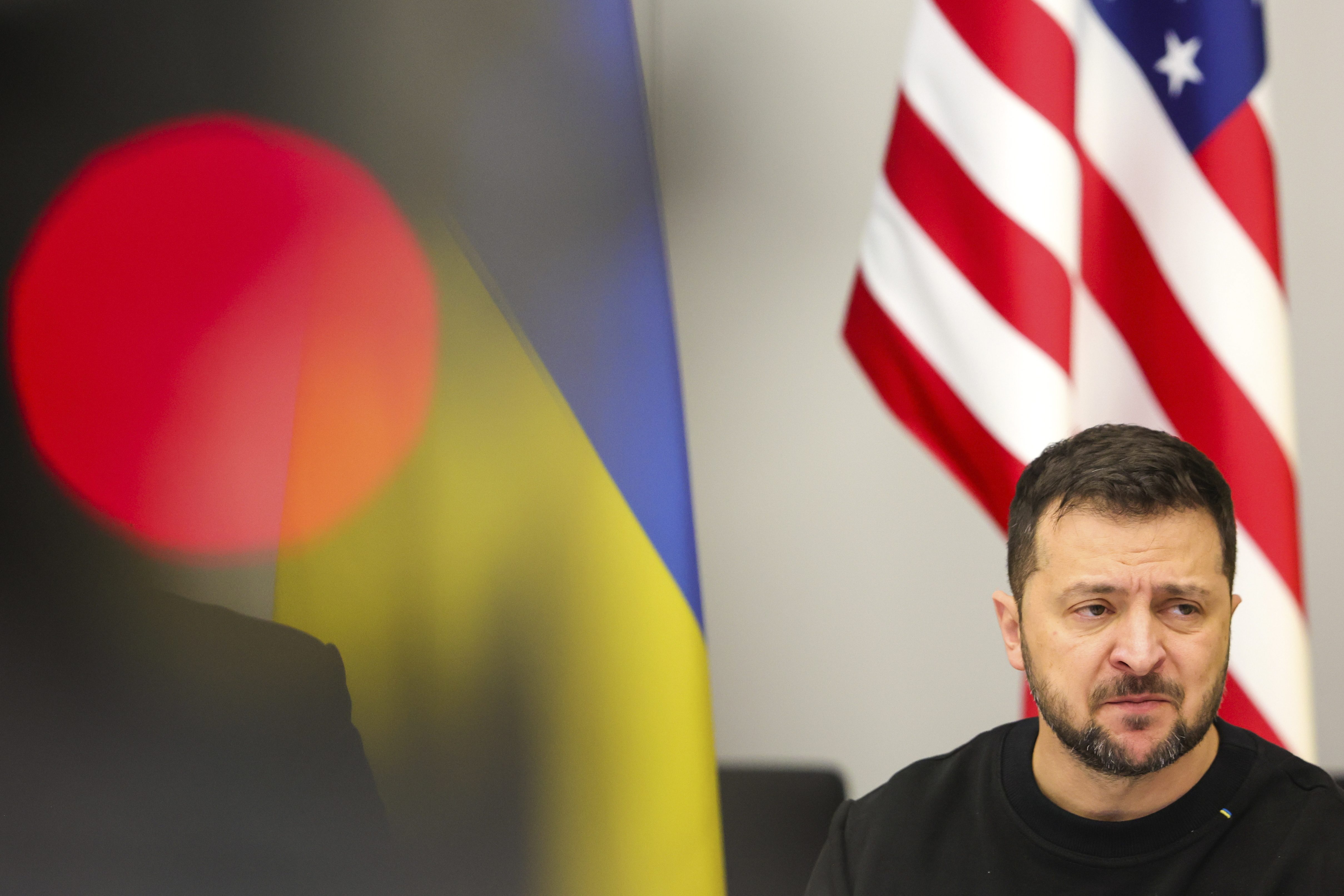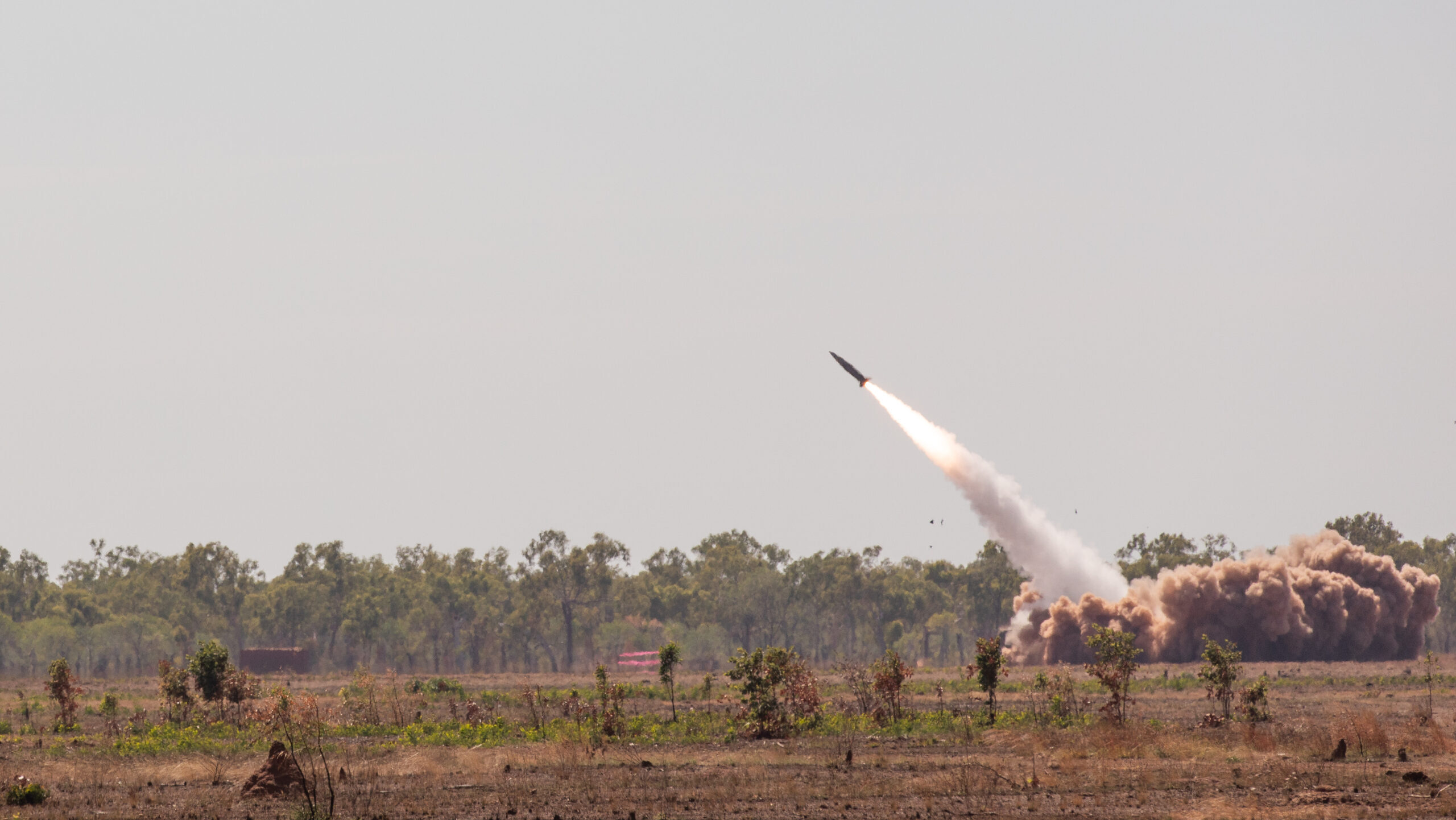Ukraine uses US-provided long-range ATACMS missiles against Russian forces for the first time
The Biden administration last month secretly shipped long-range missiles to Ukraine for the first time in the two-year war — and Kyiv has already used the weapon twice to strike deep behind Russian lines
The US secretly sent long-range ATACMS to Ukraine — and Kyiv used them
The transfer of Army Tactical Missile Systems with a nearly 200-mile range ends a years-long drama between Washington and Kyiv.
Ukraine uses US-provided long-range ATACMS missiles against Russian forces for the first time
==================================================================================================================================================
The Biden administration last month secretly shipped long-range missiles to Ukraine for the first time in the two-year war — and Kyiv has already used the weapon twice to strike deep behind Russian lines.
- In March, the U.S. quietly approved the transfer of a number of Army Tactical Missile Systems with a range of nearly 200 miles, said a senior Biden administration official and two U.S. officials, allowing President Volodymyr Zelenskyy’s forces to put at risk more Russian targets inside Ukrainian sovereign territory.
The provision of the long-range version of the ATACMS ends a lengthy drama in which Ukraine clamored for years to receive the weapon, driving a wedge between Washington and Kyiv.
- The U.S. quietly sent the medium-range version of the missile in October, but Ukraine continued to press for a weapon that would allow it to strike farther behind Russia’s lines.
POLITICO first reported in March that the U.S. was sending Ukraine a second round of a different version of ATACMS, one that travels 100 miles and carries warheads containing hundreds of cluster bombs.
- The senior administration official, who like others was granted anonymity to detail a sensitive decision, said the March shipment also included the long-range version, and that the missiles arrived in Ukraine this month.
The U.S. was initially reluctant to send ATACMS — even under sustained domestic and international pressure — due to stockpile concerns and fear of escalating the war. But Russia’s increasingly brutal tactics and more American production of the long-range version convinced Biden to authorize the transfer.
The Biden administration warned Russia that attacking Ukraine’s energy grid and using North Korean-provided missiles would lead the U.S. to reconsider sending ATACMS to Ukraine. Those strikes continued, leading top officials — national security adviser Jake Sullivan, Secretary of State Antony Blinken, Defense Secretary Lloyd Austin and Joint Chiefs Chair Gen. C.Q. Brown — to unanimously recommend the weapons transfer.
The Biden administration believes providing ATACMS can give Ukraine some new momentum in the two-year war, forcing Russia to move back critical command and control nodes and other high-value targets such as aviation assets, said the second U.S. official.
The long-range strategic missiles will also allow Ukraine to hold key parts of Crimea at risk, the official said. That includes the Kerch Bridge connecting occupied Crimea to Russia, as well as ports and naval facilities in the peninsula from which Russia’s Black Sea Fleet operates.
The official acknowledged that Ukraine is still in a tough fight, and that Russia continues to throw manpower and resources at the battlefield.
“There’s no silver bullet weapon that’s going to change the character of the battlefield,” the official said, but: “Ukraine’s got something in their toolkit that they can use at a time in place of their choosing, that creates impact, that gives them an advantage.”
But now having long-range ATACMS in its arsenal allows Ukraine to threaten Russian assets inside the whole of Crimea as well as the Black Sea Fleet. The transfer could also boost morale among Ukrainian troops increasingly fearful that they have lost the advantage in the fight.
The House Ukraine bill approved on Saturday called on the Biden administration to send long-range ATACMS to Ukraine “as soon as practicable.”
The U.S. shipment follows a similar move by the U.K., which first sent its long-range Storm Shadow cruise missiles to Ukraine in May 2023, giving Kyiv the ability to hit targets up to 155 miles away.
The official acknowledged that Ukraine is still in a tough fight, and that Russia continues to throw manpower and resources at the battlefield.
“There’s no silver bullet weapon that’s going to change the character of the battlefield,” the official said, but: “Ukraine’s got something in their toolkit that they can use at a time in place of their choosing, that creates impact, that gives them an advantage.”
- Biden approved the ATACMS decision in mid-February, the official said, but had to wait for the funding battle over the supplemental to play out in Congress. The House finally green-lighted more than $61 billion in Ukraine funding on Saturday and the Senate followed suit Tuesday, sending it to Biden’s desk for his signature on Wednesday.
- In early March, however, Pentagon officials alerted colleagues that cost savings on other weapons contracts and humming production lines allowed the U.S. to deliver long-range ATACMS before the supplemental’s passage. The weapons were then secretly sent as part of a $300 million tranche of military aid announced in March.
But now having long-range ATACMS in its arsenal allows Ukraine to threaten Russian assets inside the whole of Crimea as well as the Black Sea Fleet. The transfer could also boost morale among Ukrainian troops increasingly fearful that they have lost the advantage in the fight.
The House Ukraine bill approved on Saturday called on the Biden administration to send long-range ATACMS to Ukraine “as soon as practicable.”
The U.S. shipment follows a similar move by the U.K., which first sent its long-range Storm Shadow cruise missiles to Ukraine in May 2023, giving Kyiv the ability to hit targets up to 155 miles away.
- The weapon, which is launched from Ukrainian fighter planes, has allowed Ukraine to precisely target ammunition dumps, bridges and other critical infrastructure deep inside Russian-occupied Crimea.
- The U.K. announced its largest Ukraine aid package to date this week, which induces 1,600 missiles, including more Storm Shadows.
- France has also sent its SCALP missile, which has a similar range.
Now that three allies have sent their longer-range missiles to Ukraine, it adds more pressure on German Chancellor Olaf Scholz to send his long-range Taurus missile.
- His government so far has refused to do so, yet the move has significant support in the German parliament.
- Last year, Germany also refused to send its Leopard tanks to Ukraine until the U.S. agreed to send Abrams tanks. Scholz eventually agreed to send the tanks once Biden announced that several dozen Abrams would be sent.
MORE DETAILS FROM REUTERS
". . .Whether to send the Army Tactical Missile Systems (ATACMS) with a range up to 300 km was a subject of debate within the Biden administration for months. Mid-range ATACMS were supplied last September.
- The Pentagon initially opposed the long-range missile deployment, fearing the loss of the missiles from the American stockpile would hurt U.S. military readiness.
- There were also concerns that Ukraine would use them to attack targets deep inside Russia.
- Russia's use of North Korean-supplied long-range ballistic missiles against Ukraine in December and January, despite U.S. public and private warnings not to do so, led to a change in heart, the U.S. official said.
- Also a factor in U.S. decision-making was Russia's targeting of Ukraine's critical infrastructure, the official said.
In late January the U.S. military found a way to satisfy their concerns about military readiness, which enabled the administration to move forward. They began acquiring new missiles coming off the Lockheed-Martin production line.
Biden met with his national security team in mid-February and agreed to accept the unanimous recommendation of his advisers to send the missiles to Ukraine.
- Involved in the discussion were national security adviser Jake Sullivan, Defense Secretary Lloyd Austin, Secretary of State Antony Blinken and Joint Chiefs of Staff Chairman C.Q. Brown.
The challenge at that point was to figure out how to pay for the missiles. The United States had exhausted all of its funding options and congressional gridlock stymied further aid.
Biden was able to use the difference to send $300 million in assistance to Ukraine.
Biden told his team to include the long-range ATACMS in this funding package, but to do so secretly in order to maintain operational security and the element of surprise for Ukraine, the official said.
(Reporting By Steve Holland and Idrees Ali; Additional reporting by Phil Stewart; Editing by Heather Timmons and Stephen Coates)






No comments:
Post a Comment